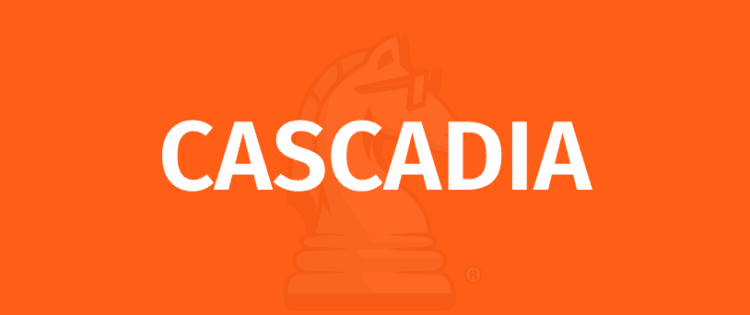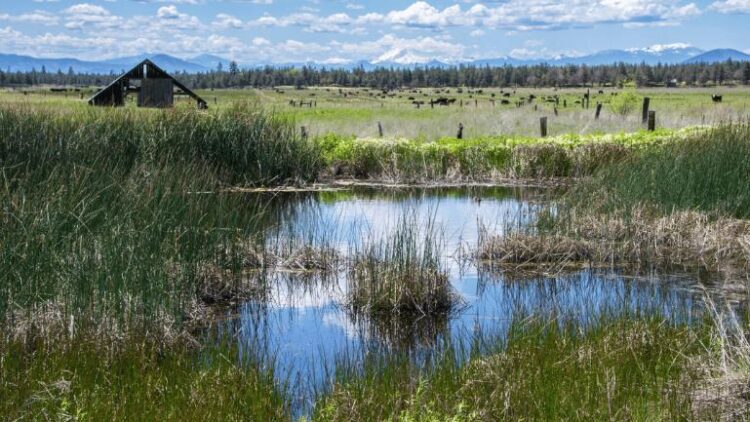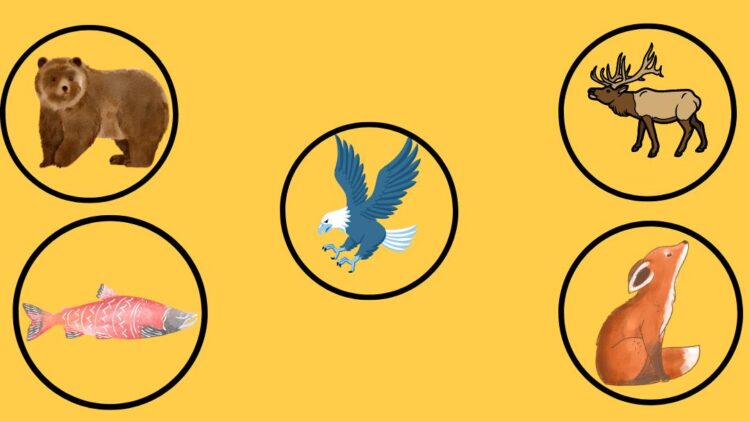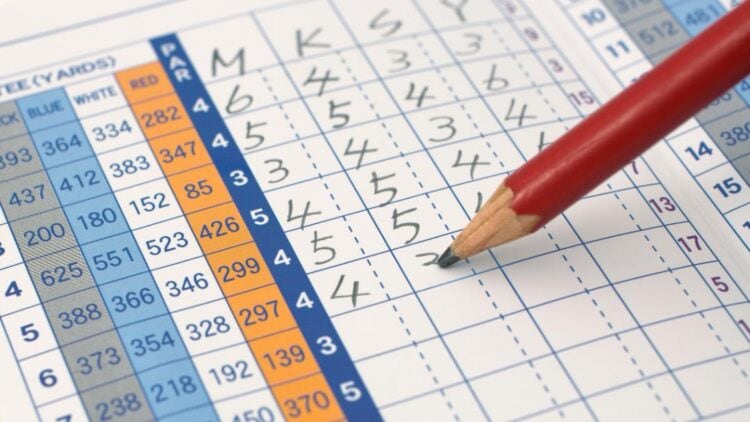
OBJECTIVE OF CASCADIA: Build the most harmonious and high-scoring landscape by placing habitat tiles and wildlife tokens according to the scoring objectives.
NUMBER OF PLAYERS: 1 to 4 players
MATERIALS OF CASCADIA: Cascadia board game
TYPE OF GAME: Board game
AUDIENCE: 10+
OVERVIEW OF CASCADIA
- AWARD WINNER: Spiel des Jahres Game of the Year 2022. American Tabletop Award...
- FAMILY-FRIENDLY FUN: exciting strategy board game with family mode for new...
- EASY TO TEACH AND LEARN: elegantly simple gameplay, teach in 2 minutes, plays in...
If you’re a nature lover, but you also love board games, then you’re in luck. Cascadia has combined both of these things into a super fun board game. The game is relatively new, published in 2021, but it quickly gained popularity and has become a fan favorite.
We’ve put together all the rules, tips, strategies, and variations into one article. So, let’s go over the rules of this awesome game and learn all the strategies you need to win during your next game night.
Just so you know, we’ve included affiliate links in this post – clicking on them supports us without any extra cost to you!
SETUP FOR CASCADIA


Before you get started playing you need to set everything up. All you need is a Cascadia board game, a flat surface to play on and up to four players total to play.
WHAT’S IN THE BOX?
It might seem a bit daunting with all the different pieces, but do not worry; you’ll be able to set it up in your sleep after this read. Let’s go over what comes in the Cascadia game box. It should include the following:
- 5 Starter Habitats tiles (each with a different combination of 3 habitat hexes, one single and 2 double terrains).
- 85 Habitat tiles (42mm hexes): 5x each Terrain (Forest, Prairie, Wetland, Mountain, River), 6x each combination of two terrains (double terrain).
- 25 Nature tokens (Douglas Fir cones)
- 21 Wildlife Scoring cards (70x120mm):
- 4x each animal (Grizzly Bear, Roosevelt Elk, Chinook Salmon, Red-Tailed Hawk, Red Fox)
- 1 Family/Intermediate Variant Scoring card
- 1 Scorepad (65x160mm)
- 100 Wildlife tokens: 20x each brown Bear, tan Elk, pink Salmon, blue Hawk, orange Fox; (with applied image on one side)
- Cloth bag for Wildlife tokens (light green, 20x20cm)
There’s no official board because you build the board yourself while you play the game.
GAME PIECE DISTRIBUTION


Now that everything is out of the box, it’s time to distribute all the different pieces so you can get the game started.
STARTING TILES
Start by giving each player one of the five starting habitat tiles at random. And place any remaining to the side. Each player can now place this tile face up in front of themselves.
HABITAT TILES
Now take all of the habitat tiles, turn them facedown and shuffle them. The number of tiles you use for the game depends on the number of players.
- 2 players – 43 tiles
- 3 players – 63 tiles
- 4 players – 83 tiles
Place any leftover tiles to the side or back in the game box. You can stack the tiles that are in play any way that is convenient for all players. Then, take four of the tiles at random and turn them face up.
There are four different terrains in the game, and they are as follows:
- Forest
- Prairie
- Wetland
- Mountain
- River
WILDLIFE TOKENS


Next, you will take the wildlife tokens and put them into the cloth bag that comes with your game. Give the bag a jiggle to mix them up, and pick four random wildlife tokens. Place these below each of the face-up habitat tiles.
If you happen to draw four tokens of the same animal, then you have overpopulation. Simply draw four new tokens and place the other ones back in the bag.
The four different tokens are as follows:
- Brown Bear
- Tan Elk
- Pink Salmon
- Blue Hawk
- Orange Fox
Keep the 25 nature tokens nearby and accessible to all players.
WILDLIFE CARDS
Finally, you have the wildlife scoring cards. There are 4 sets marked A, B, C, and D. They show the 5 animals that are in the game: Bears, Elk, Salmon, Hawk, and Fox.
You can either take one at random for each type of wildlife or if it’s your first time playing, take the cards marked “A.” Place these somewhere where everyone can see so they can understand how the scoring is counted for this game.
Now, just pick a player at random to go first, and you’ll be ready to get started. The first player will start, and after their turn, the game plays clockwise.
HOW TO PLAY CASCADIA
Now that everything is set up, you’re ready to get started playing. A turn in Cascadia has only two parts: drafting and placing. Let’s go over each one of these in detail as they have a few parts to them.
DRAFTING
You start the game by taking one pair of the four habitat tiles and wildlife tokens. You will replace these by drawing a new, random habitat tile and a wildlife token to go with it.
PLACING HABITAT TILES


Now, take the pair that you drew and place it anywhere on your starting tile. It doesn’t have to be the same terrain as in Carcassonne, just as long as one side is touching another tile. However, remember that you get points for having a longer area of matching terrain. (see scoring section)
PLACING WILDLIFE TOKENS
Then, take the wildlife token and place it on any hex that doesn’t already have a token on it. It must also have a photo of that animal on it. For example, if you draw a fox, you can place it on any tile that has a fox photo on it. However if there is no free hex that has a photo of that token, then you must place it back into the green bag.
Remember that once you place an animal somewhere, you can’t move it. In some cases, however not common, you can place a wildlife token from your terrain,back into the bag on your turn.
REPLACEMENT
Once you’ve fully finished your turn, you replace the wildlife token and habitat tile you took with new ones, and the next player can go.
SPECIAL TILES
There are a few special tiles in the game. They are the terrain tiles with only one type of terrain and only one animal. These are called keystone tiles. Once you place the corresponding animal onto a keystone tile, you get to take one of the nature tokens.
The nature tokens let you do some special moves on your turn. You can use your nature token to swap one or all of the wildlife tokens currently up for grabs. Or you can take any one of the four habitat tiles and any one of the four wildlife tokens, even if they are not together. Then replace the pieces you’ve taken
SCORING


After each player has taken 20 turns, then it is time to take a score using the wildlife cards. They will show you what each habitat and animal will give you in terms of points. Throughout the game, you can reference these cards to try to set your terrain in a way that will give you more points.
WILDLIFE POINTS
At the end of the game, each type of wildlife you have on your board will give you a certain score. Creating certain patterns of wildlife next to each other will also help boost your points. For example, with the simple A card, you want to keep hawks away from other hawks in order to score higher.
HABITAT CORRIDORS
Now, after you add up the wildlife points, you also get points for your terrains. You must count up the largest contiguous area of each habitat type in your landscape, and you get one point for each of those tiles. For example, if you have two wetland areas, one of which has six contiguous pieces, and the other only four, you get the higher of the two. This is why it is important to keep an eye on these when building your landscape in Cascadia.
Then look at the scoresheet and whichever player has the largest of of each landscape scores an additional two points. If there is a tie, each player scores one if it’s a two player game.
For a three or four player game the one with the largest habitat scores three points, and the second largest scores one point. If there’s a tie then each player gets two points. And finally if there’s a three or four way tie, all players get one point. There’s no bonus for second place here.
NATURE TOKENS
Finally, any leftover nature tokens will get you one point each. That is why you have to use them wisely.
END OF GAME
The player with the highest score is the winner. If there is a tie, then the player with the most nature tokens remaining wins. If they are still tied, it is a draw.
STRATEGIES FOR CASCADIA


Cascadia is an awesome game to play. It lets you build your terrain in any way you want, and the illustrations are amazing. However, did you know there is a bit of strategy involved? Let’s discuss some of the strategies you can use to score better at Cascadia.
PLAN AHEAD
This is a really important tip when playing Cascadia. You need to be always thinking ahead and planning. You have access to the wildlife card so you can see what kind of terrain you need and what wildlife will score you more points. Consider how each tile and token will help you in the end.
BALANCE HABITAT AND WILDLIFE
The next tip for Cascadia is to focus on the wildlife patterns. Putting two animals next to wach other could potentially make you gain or lose points. At the same time you should look at your habitat placement as well. It can be easy to place them randomly on the board, but remember that the largest contiguous area gets more points.
NATUR TOKENS
Finally, you need to take care of your nature tokens. Yes, they can be helpful early in the game to help you with your placement. However, they could mean the difference between a draw and a win. Use them wisely, and always have a few backups.
VARIATIONS AND EXPANSIONS OF CASCADIA
Cascadia is a great game to play with friends. However, the cool thing about this game is that there is a solo variation. It lets you play the game even when nobody is available or if you’re just not feeling social.
CASCADIA SOLO
The gameplay for Cascadia when you’re playing solo is very similar to the original game. The difference is that after you draw on your turn, you take the column furthest to the right and discard it. Then, slide the other tiles over and replace the empty spaces on the left. This helps to randomize the tiles and make the game more challenging.
After 20 turns, you end the game and add up your score. There is a chart in the rule book that will let you know how good or bad your score is.
CASCADIA LANDMARK EXPANSION
There is an expansion that you can buy for Cascadia. You can create habitats and places with natural landmarks in them. It makes the game a bit more complex and adds variety to the scoring cards while adding new habitat tiles.
CASCADIA BOARD GAME: MY HONEST OPINION
I absolutely loved Cascadia. As a fan of tile placement games such as Catan, this game quickly became on e of my favorites. It is great because due to the tiles, there is unlimited replayablility. It is one of those games that will be different every time you play.
I also loved the fact that I could play the game on my own. It is hard to find a high-quality game where you don’t need other players every time. The game seems so simple, but a single move can entirely throw off your strategy. So you always have to be thinking ahead.
FAQ
How Long Does It Take to Play Cascadia?
Cascadia can take anywhere from 30-45 minutes, depending on the skill level of the players.
Are There Cascadia Expansions?
There is an expansion called Cascadia Landmarks, which features extra scoring cards, new habitat tiles, and natural landmarks.
How Many People Can Play Cascadia?
You can play Cascadia solo or with up to four players.
- 20+ Epic Outdoor Drinking Games - June 28, 2024
- 30 Gifts for Board Game Lovers - June 27, 2024
- 33 Games for Church Youth Group - June 21, 2024
